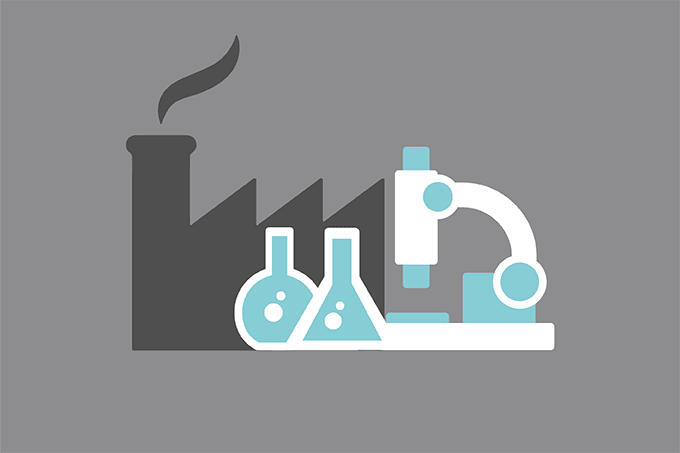A cornerstone of organometallic chemistry may not work quite the way textbooks suggest. Researchers at Penn State have uncovered an alternative mechanism for oxidative addition – a reaction central to transition metal catalysis – in which electrons flow from the organic molecule to the metal, rather than vice versa. The team used time-resolved nuclear magnetic resonance spectroscopy to capture the reaction’s intermediate state, providing clear evidence that this “reversed” pathway is operative.
Published in the Journal of the American Chemical Society, the study invites a rethink of catalytic paradigms and may help explain puzzling observations in both industrial and biological chemistry. In this interview, senior author and Assistant Professor of Chemistry, Jonathan Kuo, reflects on how the discovery came about – and where it could lead next.

What prompted you to re-examine a reaction as fundamental as oxidative addition?
To be honest, we did not set out expecting to find a new mechanistic pathway. In general, my research program tries to use quantifiable thermodynamic or kinetic data to identify new platforms for catalysis. We took an interest in the system because the published thermochemical data implied that it was among the most Lewis acidic transition metal complexes yet isolated. Furthermore, it had been reported to undergo oxidation with H2. Those two observations together suggested that the system would be able to catalyze certain proton-dependent reactions. However, those reactions did not work as designed, and so I tasked my co-author Nisha Rao with finding out what the problem might be. By monitoring the reaction with H2, she was able to identify that the order of events was seemingly atypical of oxidative addition. From there, it was a “follow-your-nose” type of journey.
In simple terms, what’s flipped in your proposed mechanism?
Many oxidative additions involve the metal donating electrons to the substrate that it activates (H2, in our paper). Because the substrate is typically an organic molecule with a closed shell configuration, this electron density must go into an antibonding orbital and lowers the bond order. So, one might then assume oxidative addition should generally be accelerated by increasing the electron donating properties of the transition metal (and indeed this does often happen). In the system we’ve worked on, the first step of the oxidative addition is to heterolyze a stable organic molecule, e.g. converting nonpolar H2 into a hydride (H–) and a proton (H+). Heterolysis is promoted by electron deficient transition metals, which one can think of as asymmetric “tugging” on the electron density from the H–H vector. In the system we studied, it appears that this “tugging” was so strong that it formally heterolyzed H2, which subsequently resulted in oxidative addition. But because the initial step here is the substrate donating electrons to the transition metal, it may be accelerated by using increasingly electron-deficient metal complexes.
What role did spectroscopy play in the research?
One thing to note is that some prior reports had suggested that some oxidative additions might be heterolytic – some have even alluded to this reaction cheekily as “reductive addition.” However, no intermediates were observed in other systems. A unique opportunity, which we capitalized on, was the intermediacy of an initially heterolyzed state that accumulates before it converts to the oxidative addition product. By spectroscopically monitoring this intermediate state – its rate of accumulation and depletion – we were able to establish the order of events in the oxidative addition reaction. So, I would say spectroscopic evidence was the key – especially monitoring the reaction as a function of time.
What are the main implications of this discovery?
I would note three things. The first possibility is related to inventing new reactions and chemical processes. These reactions are largely invented based on established mechanistic paradigms, and I’m hopeful that our work will bring more attention to this activation paradigm (which I think may be underexplored). The second possibility is that the process we’ve characterized might better explain some of the reactions which have recently been invented. Oxidative addition was originally thought specific to low-valent metals, a famous example being Pd(0) promoted cross-coupling. But in recent years, more and more reactions have been invented that seemingly involve oxidative addition to Pd(II). In a sense, we are suggesting how the altered valence state might still facilitate the same reaction. Finally – and admittedly this is my most “out there” point of view – I think this resolves a long-standing conundrum about activations by nature versus activations in synthetic systems. Many synthetic reactions proceed through oxidative addition, but electron rich transition metals are not compatible with water (eventually, reducing metals react with protons). So, curiously, oxidative addition is not thought accessible to any enzymatic system (at least to my knowledge). But a heterolytic alternative is very provocative – as heterolysis is a dominant paradigm in enzymatic catalysis (and in fact it’s significantly easier to heterolyze anything in water – a polar medium).
You mentioned an interest in applying this new mechanism to breaking down stubborn pollutants. Could this include PFAS or similar persistent chemicals?
Perhaps… that would certainly be cool, wouldn’t it? Most methods of breaking down PFAS right now use strong bases which have very reducing potentials, potentially leading to the assumption that you should increase the electron donating properties of the activator…
What’s next for this work?
At heart, I’m a physical organic chemist. One of the things I am most motivated by is interrelating theories of bonding to reactivity. So, I’m most interested in following up on whether this reaction paradigm can activate any chemical that might currently be thought of as too inert. Another question I would ask is whether we can design systems that are even more electrophilic, and therefore even more capable of performing this type of activation. As one starts to approach any thermochemical extreme, the question of selectivity becomes increasingly important. Are there ways of “gating” access to the thermodynamically capable catalyst such that only certain substrates get recognized? Those are some initial instincts, anyway.




